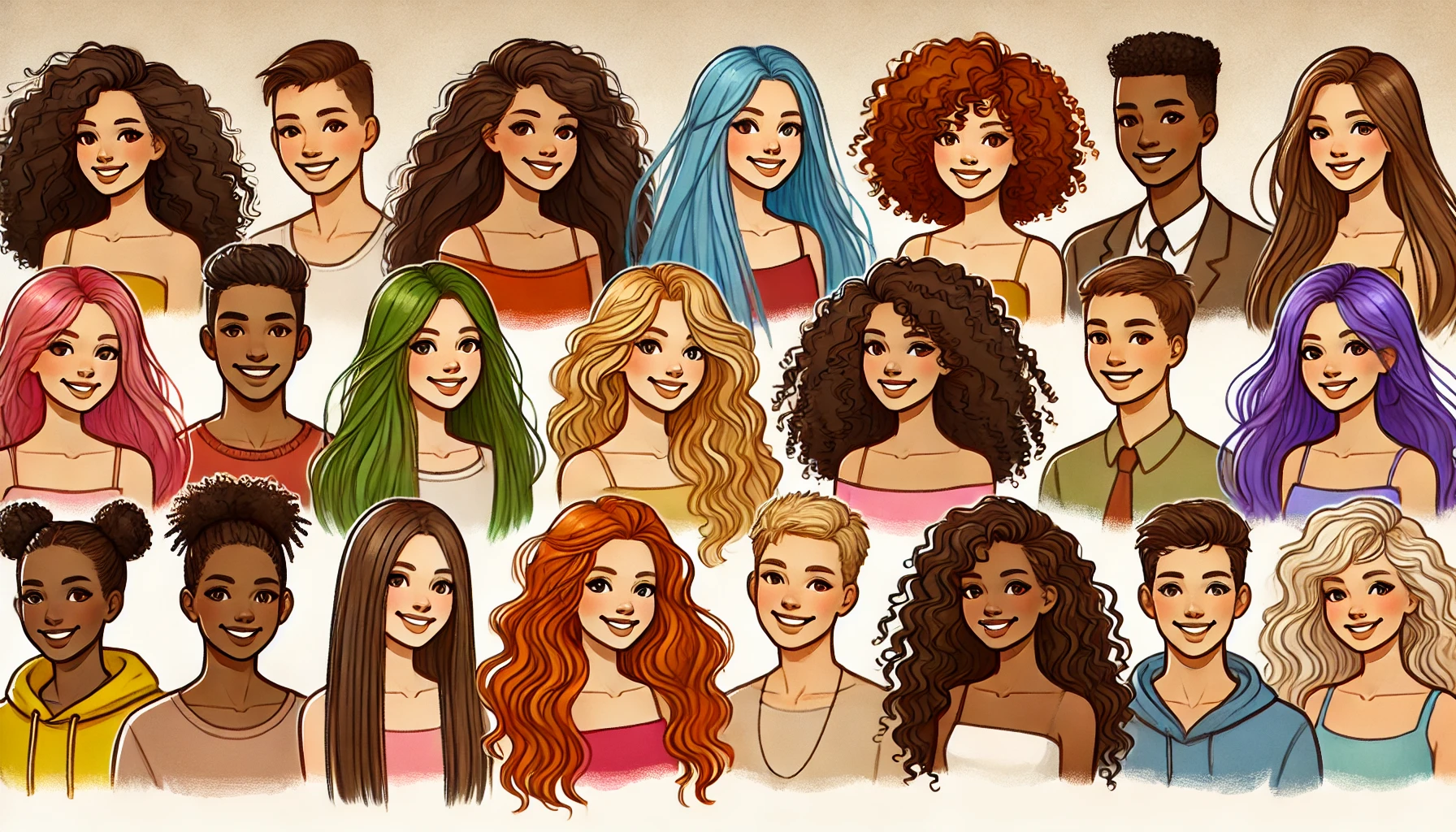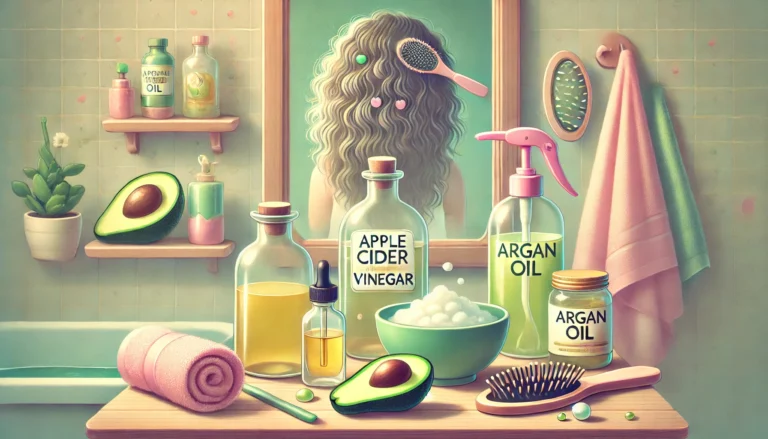How to Care for and Style Different Hair Types
For many, navigating the complexities of hair care can be frustrating, particularly when you’re unsure how to manage your unique texture. You might feel overwhelmed by the effort and cost of maintaining your hair or confused by contradictory advice. But here’s the thing: you don’t need to fight your natural hair. Instead, learning its characteristics is critical to unlocking effortless care and style.
Understanding your hair’s curl pattern, porosity, and density can radically simplify your routine, empowering you to embrace and care for it confidently. This article breaks down the intricacies of different hair types and offers expert advice on nurturing and styling each one to enhance its natural beauty.
What does hair type mean?
Your hair type is a blueprint for how your hair behaves, primarily dictated by the shape of your hair follicle. The more elliptical or asymmetrical the follicle, the curlier the hair. Straight hair, on the other hand, sprouts from round follicles. Your genetics predetermines these patterns, and while you can alter them with heat or chemical treatments, your hair’s fundamental structure will always revert to its original DNA blueprint during each growth cycle.
Understanding your specific hair category will help you appreciate your hair’s natural tendencies rather than fighting against them. Each hair type has its own needs; knowing yours can significantly simplify your routine.

Types of Hair
Andre Walker, famed for his decades of work with Oprah Winfrey, devised a widely accepted system for categorizing hair into four types. These are:
- Type 1: Straight hair
- Type 2: Wavy hair
- Type 3: Curly hair
- Type 4: Coily hair
Each hair category is further subdivided into A, B, or C based on how tight or loose the curl is, making it essential to recognize that your hair may span multiple types. For instance, you might have tighter curls at the crown and looser waves at the nape of your neck. Understanding these nuances can help you determine the best way to maintain and style your hair for optimal health and beauty.
By learning which of these four hair types you belong to, you can effectively choose the right products and methods to suit your texture and structure.
How to Style and Care for Your Hair Type
Type 1: Straight Hair
Straight hair, whether fine or coarse, has no natural curl and tends to become oily quicker than other types. This is because natural scalp oils travel down the shaft easily. To avoid greasiness, opt for lightweight, oil-free products. A good clarifying shampoo or texture spray can add volume without weighing down your strands.
For those in this hair category, stylist Kristi Lovelace recommends staying clear of heavy serums or butter, as they can leave straight hair looking limp. Dry shampoos and texturizing sprays are key for maintaining volume,” Lovelace advises. For those seeking a fashionable edge, a sharp, blunt chin-length cut works wonders, particularly with fine hair. Pair that with the right styling products; your locks will have a sleek, polished finish.
Type 2: Wavy Hair
Wavy hair sits somewhere between straight and curly, often forming loose, natural waves from mid-length to the ends. Heavy products can easily weigh down this type, so stick to lighter gels or mousses to preserve those natural bends and swells. People with this hair type often find oil-based products flatten their waves, making light formulations a better choice.
- Type 2A hair is more relaxed and needs minimal styling. A salt spray can enhance texture without compromising volume.
- Type 2B hair, with its more defined S-shaped waves, is perfect for balayage, where natural movement adds dimension to color. Lovelace points out that wavy hair creates the perfect canvas for this popular style.
- Type 2C hair is thicker and more prone to frizz, especially in humidity. A diffuser attachment for your blow dryer and anti-humidity products will be your best friends, helping you keep that tousled look intact without the extra fluff.
Wavy hair is unique in bridging the gap between straight and curly. Recognizing where your hair falls within this category helps ensure you’re treating it with the proper methods.

Type 3: Curly Hair
Curly hair requires more care, but its natural bounce and volume can be stunning when treated right. Hydration is often a top priority for those with curly hair types, as curls tend to lose moisture more quickly than straighter hair.
- Type 3A curls are loose and tend to form large, soft loops. To prevent frizz, avoid brushing dry curls; instead, gently finger-comb through wet hair to keep your curl structure intact. Master stylist Silvana Castillo suggests ditching the daily ponytail to avoid traction alopecia, a condition caused by pulling the hair too tightly over time.
- Type 3B curls are tighter and more voluminous, springing into defined ringlets. Hydration is crucial here—moisturizing products without silicones and sulfates will nourish without drying out the curl. Keep those corkscrews intact using hydrating creams and avoiding heat styling whenever possible.
- Type 3C curls are denser and tighter still, coiling like tiny springs. Finger-combing wet hair with leave-in conditioners helps to maintain curl integrity, while air-drying is generally better than blow-drying to reduce frizz and breakage.
Those with curly hair need products and routines that keep their curls moisturized and defined. A balance of hydration and gentle care will allow you to celebrate your curls with minimal effort.
Type 4: Coily Hair
Coily hair is the most fragile and prone to breakage, making it essential to be extra gentle with these tight curls. Decadent moisture treatments are necessary to keep coils healthy and full of life.
- Type 4A hair forms dense, S-shaped coils. Castillo suggests moisturizing creams and deep-conditioning treatments to keep the hair hydrated and resilient, particularly in harsh weather conditions.
- Type 4B hair bends in sharp angles, forming more of a Z-shaped pattern. Shingling—where you apply curl cream section by section and twist each strand around your finger—helps define these curls beautifully.
- Type 4C hair has the tightest, most delicate coils. It’s vital to be gentle when styling and detangling, as this hair type is prone to breakage. Co-washing, or rinsing with a conditioner instead of shampoo, is excellent for preserving moisture. Many with 4C hair proudly embrace their natural texture, opting for bold, voluminous styles that celebrate their crown’s natural splendor.
The oily hair category demands moisture, patience, and careful handling. These tight coils can thrive and shine with the right products and care.

The Connection Between Hair Care and Health
The increasing embrace of natural hairstyles, especially for Type 4 hair, isn’t just about aesthetics—it carries health benefits too. Research has shown that concerns about maintaining certain hairstyles, particularly chemically straightened ones, often prevent women from engaging in physical activity. More and more women are discovering that you can stay active without sacrificing your hair’s health or beauty.
This awareness of the link between hair care and overall wellness underscores the importance of finding a balance that works for your lifestyle while celebrating the beauty of all hair types.
How Porosity and Density Impact Your Hair
Porosity
Porosity refers to your hair’s ability to absorb moisture. Highly porous hair has more “gaps” in the cuticle, allowing moisture to pass through more quickly and making it prone to frizz and damage. The bright side? Porous hair soaks up nourishing products like leave-in conditioners and oils with ease. If your hair isn’t naturally porous but becomes so through chemical treatments, opt for more affluent products to seal the cuticle and retain moisture.
Moisture can be harder to absorb for less porous hair. Lighter products like milk and mousses are ideal for adding volume without buildup. A blow dryer can help the cuticle open slightly, allowing moisture to penetrate.
Understanding your hair’s porosity level helps you select products that will work harmoniously with its moisture-retention abilities, keeping it hydrated without weighing it down.

Density
Density speaks to the number of strands per square inch of scalp. Thicker, denser hair may benefit from heavy creams and oils, which tame volume and add shine. Conversely, low-density hair may require products that boost volume, such as light mousses or texture sprays.
If your hair density changes, it could be due to stress, hormones, or changes in your product routine. Continually reassess your styling regimen to ensure your products complement your current hair state.
Knowing your hair’s density is crucial in helping you choose the right products. Those with high-density hair will need heavier formulations, while those with finer, less dense hair should opt for lightweight products to create volume and texture.
The Bottom Line
Understanding your hair type is the key to unlocking its true potential. Straight, wavy, curly, or coily — each texture brings challenges and opportunities. Selecting the right products and techniques for all hair types ensures your hair remains healthy, hydrated, and looks its best. Consult with professionals or follow someone with a similar hair type to stay informed and inspired.



